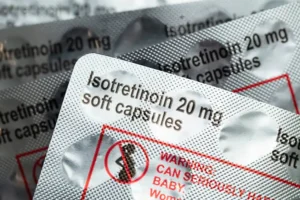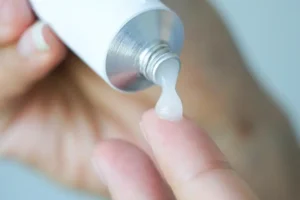Fat grafting, also known as autologous fat transfer, has become one of the most promising treatments for atrophic acne scars. Instead of using synthetic fillers, this method relies on a person’s own fat to restore lost volume and improve skin texture. Many dermatologists see it as a natural way to rebuild structure beneath depressed scars and promote long-term skin regeneration.
This article explains how fat grafting works, which types of acne scars benefit most, and what you should know about results, recovery, and potential risks.
What Is Fat Grafting for Acne Scars
Fat grafting is a minimally invasive cosmetic procedure where fat is harvested from one part of the body, purified, and injected beneath areas of scarring. The main goal is to fill in depressions caused by tissue loss and create smoother, more even skin.
Because the fat comes from your own body, there is no risk of allergic reaction or rejection. Fat also contains regenerative cells known as adipose-derived stem cells, which may improve collagen formation and overall skin quality over time.
How Fat Grafting Works
The procedure is performed in several stages by a qualified dermatologist or plastic surgeon:
-
Harvesting: Fat is gently removed from donor areas such as the abdomen, thighs, or hips using liposuction.
-
Purification: The fat is processed through centrifugation or filtration to isolate healthy fat cells and regenerative stem cells.
-
Injection: The purified fat is carefully reinjected beneath the skin in small, layered amounts using fine cannulas to ensure a smooth surface.
-
Healing: The transferred fat gradually integrates with existing tissue over several months, improving contour and skin texture.
Not all transplanted fat survives. Typically, about 40–70% of injected fat remains long-term, so a touch-up session may be recommended.
Which Acne Scars Respond Best
Fat grafting works best for atrophic acne scars, which form when inflammation destroys collagen and underlying fat tissue. It’s particularly effective for:
-
Rolling scars: Soft, shallow depressions with smooth edges that respond well to added volume.
-
Boxcar scars: Broader, defined depressions that benefit from subdermal filling.
It is not suitable for:
-
Ice pick scars, which are deep and narrow, requiring treatments like TCA CROSS or punch excision.
-
Hypertrophic and keloid scars, which involve excess collagen buildup rather than volume loss.
In many cases, dermatologists combine fat grafting with subcision, platelet-rich plasma (PRP), or fractional laser resurfacing for a more comprehensive improvement.
Benefits of Fat Grafting
Natural Volume Restoration
Because fat is harvested from your own body, it restores lost volume naturally and integrates seamlessly with surrounding tissue.
Regenerative Potential
Adipose-derived stem cells found in the grafted fat stimulate collagen production, increase blood supply, and improve overall skin elasticity.
Long-Lasting Results
When the grafted fat establishes a stable blood supply, results can last for years—often longer than synthetic fillers.
Biocompatibility
Since the tissue is autologous (from your body), there’s no risk of allergic reaction or rejection.
What to Expect After Treatment
Fat grafting is typically performed under local anesthesia with mild sedation. Some swelling, bruising, or tenderness may last one to two weeks. Most people return to normal routines within several days.
Visible improvement develops gradually as the fat settles and collagen remodeling takes place. Final results are usually seen after three to six months.
Because a portion of the fat is reabsorbed naturally, a second session may be needed for balanced results.
Possible Risks and Complications
Although generally safe, fat grafting carries certain risks, especially when performed by inexperienced providers. These may include:
-
Partial fat absorption leading to uneven correction.
-
Lumps or nodules caused by fat necrosis.
-
Overcorrection or asymmetry if too much fat is injected.
-
Infection or prolonged swelling, though uncommon.
-
Temporary bruising or soreness in both donor and treated areas.
Selecting a board-certified professional and following all post-procedure care instructions significantly reduces these risks.
Fat Grafting Compared to Dermal Fillers
Both fat grafting and dermal fillers aim to correct volume loss and smooth atrophic acne scars, but they differ in composition, longevity, and suitability.
Dermal Fillers for Acne Scars
Dermal fillers are injectable gels designed to lift depressed scars by adding temporary or semi-permanent volume. The most common types include:
-
Hyaluronic acid fillers (e.g., Restylane, Juvederm): Offer immediate results but typically last 6–12 months.
-
Calcium hydroxylapatite fillers (e.g., Radiesse): Provide structural support and stimulate collagen.
-
Poly-L-lactic acid (e.g., Sculptra): Works gradually to boost collagen over time, ideal for widespread shallow scars.
Key Differences
-
Longevity: Fat grafting can last several years or more if the fat survives, while fillers require regular maintenance.
-
Natural integration: Fat becomes part of the tissue, whereas fillers remain as foreign materials that eventually degrade.
-
Regeneration: Fat contains stem cells that help rejuvenate skin; fillers primarily restore structure.
-
Precision: Fillers allow finer control for small, defined scars, while fat grafting suits larger areas of atrophy.
-
Cost and downtime: Fillers are less invasive but temporary; fat grafting involves minor surgery but offers long-term benefit.
For many patients, dermatologists recommend combining both approaches—using fat grafting for base volume and fillers for fine contour adjustments.
Cost and Longevity
In the United States, fat grafting for acne scars typically costs between $2,000 and $5,000, depending on the clinic, provider expertise, and treatment scope.
Results can last for several years if the transferred fat establishes a healthy blood supply. Some resorption is expected, and maintenance sessions may be needed to preserve symmetry and fullness.
Who Should Avoid Fat Grafting
You may not be a good candidate if you have:
-
Active acne or infection in the treatment area.
-
Poor wound healing or bleeding disorders.
-
A tendency toward hypertrophic or keloid scarring.
-
Unrealistic expectations for instant results.
-
Heavy smoking habits, which reduce graft survival.
Your dermatologist can help determine whether fat grafting is appropriate for your skin and scar type.
FAQs About Fat Grafting
Can fat grafting remove acne scars completely?
No, but it can significantly improve texture and depth by restoring lost volume and stimulating new collagen.
How long do the results last?
If the grafted fat survives, results can last several years. Some patients need periodic touch-ups.
Can it be combined with other scar treatments?
Yes, fat grafting pairs well with PRP, subcision, and laser resurfacing for enhanced results.
Is the procedure painful?
Mild discomfort is common but manageable with local anesthesia. Most people describe it as less painful than expected.
How long is recovery?
Swelling and tenderness resolve in one to two weeks, while final improvements appear over several months.





